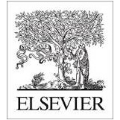Exposure to high ambient temperatures is a significant driver of preventable mortality, with non-linear health effects and elevated risks in specific regions. To capture this complexity and account for spatial dependencies across small areas, we propose a Bayesian framework that integrates non-linear functions with the Besag, York, and Mollie (BYM2) model. Applying this framework to all-cause mortality data in Switzerland, we quantified spatial inequalities in heat-related mortality. We retrieved daily all-cause mortality at small areas (2,145 municipalities) for people older than 65 years from the Swiss Federal Office of Public Health and daily mean temperature at 1km$\times$1km grid from the Swiss Federal Office of Meteorology. By fully propagating uncertainties, we derived key epidemiological metrics, including heat-related excess mortality and minimum mortality temperature (MMT). Heat-related excess mortality rates were higher in northern Switzerland, while lower MMTs were observed in mountainous regions. Further, we explored the role of the proportion of individuals older than 85 years, green space, average temperature, deprivation, urbanicity, and language regions in explaining these discrepancies. We found that spatial disparities in heat-related excess mortality were primarily driven by population age distribution, green space, and vulnerabilities associated with elevated temperature exposure.
翻译:暂无翻译





